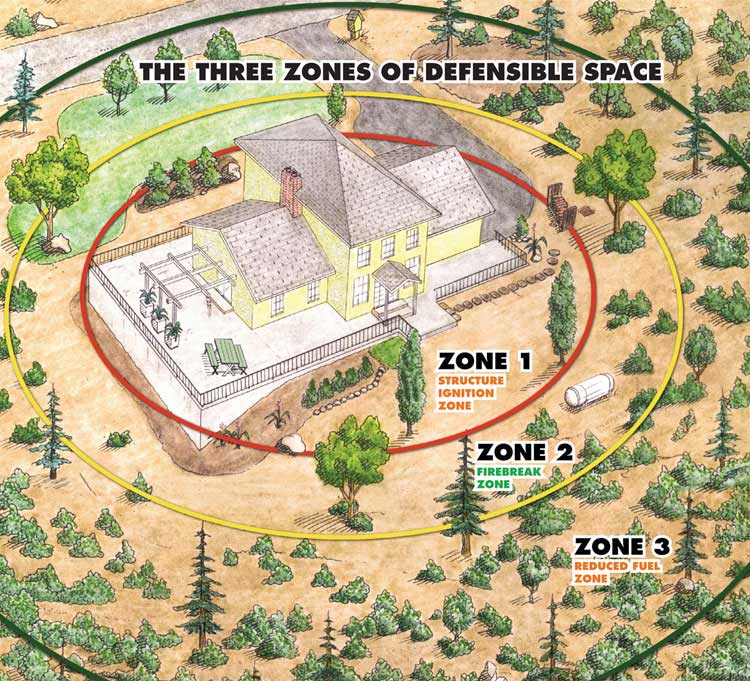Watch These Firewise Videos
The following videos will give you a deeper understanding of home hardening and fire behavior during wildfires.
You will learn that you definitely can affect the behavior of wildfire in and around your home. There is hope.
Find the time to watch them all!
Your Home Can Survive a Wildfire
Just released by the NFPA in November 2015 this video says it all. If you choose only one, this is it.
Wildfire! Preventing Home Ignitions
with Jack Cohen, Research Physical Fire Scientist with the USFS
Examining Home Destruction by Wildfire in the Wildland Urban Interface
Fire Behavior in the Wildland Urban Interface
Firewise Videos for you. If you are serious about getting fire wise, watch them all.
The huge takeaway fact is that most structure fires are ignited by embers.
Overwhelmingly homes that are destroyed in the Wildland Urban Interface during wildfires almost always are ignited by flying embers accumulating on or near your home, or actually penetrating to the interior of your home. Jack Cohen calls these ‘brand blizzards’.
Are you ready to take action against wildfire brand blizzards? The steps you need to take to protect your home, are surprisingly simple.
Ember Storm Test Highlights
Embers? Yes, embers, also known as firebrands. Watch what they can do.
In this firewise video the Insurance Institute for Business and Home Safety’s Research Center shows the highlights of their Wildfire / Ember Testing. Check out how the embers blow into the attic through the vents. Little things like firewise vents can save your home from an ember storm.
IBHS Research Center Ember Storm Test Highlights
Ember Animation
Home Improvement: A Firewise Approach
Making Your Home Firewise
About Jack Cohen
Jack Cohen is a research physical fire scientist with the US Forest Service. Jack has been studying the causes of structure fires in the wildland urban interface for over three decades.
When he noticed that more homes away from wildfires were burning than closet to the front, he figured out that we don’t have a wildfire control problem, we have a home ignition problem.
Jack studies the physics of wildfire from a strictly logical, detached perspective, looking only at the evidence at hand. The inevitable conclusion is that you absolutely can prepare your home to survive a wildfire.
Why Do Some Homes Burn while Others Don’t?
Since the nineteen seventies Jack has been studying the causes of structure fires from the perspective of the conditions necessary for combustion being present, or not being present.
By examining the evidence left behind after a wildfire, Jack can largely determine what may have caused that particular home to ignite, compared to other structures that were spared.
The Little Things Make All the Difference
What Jack discovered is pretty astounding.
Jack found that it’s usually the little things that cause most home losses to wildfire.
He discovered, and validated with controlled lab tests, that the radiant heat from a crown fire, or the fire front, is rarely sufficient to ignite a structure.
Jack’s discovery that it’s extremely rare for a home or structure to burn from the fire front, or “direct flame impingement”, led him to one simple conclusion. He found that there is much you can do to save your home from wildfire.
You CAN Positively Affect Wildfire Behavior
Because what usually destroys homes is the overlooked little things ignited by embers, sparks, firebrands or clinkers, Jack found that you absolutely can, simply and easily, deny the conditions of combustion from a wildfire approaching your home and surrounding area.
Armed with all of this information, Jack’s discovery that you can easily influence fire behavior in and around your home, got him involved with Firewise Communities. Doing this work long before the fire arrives gives any home and surrounding area a better chance of survival.
To get more specific on what and where to treat, Jack formulated the home ignition zone.
Introducing the Home Ignition Zone
The home ignition zone is an area that includes your home and its immediate surroundings. If properly conditioned, your home can be saved during a wildfire. The home ignition zone regards property from the perspective of a wildland fire.
The home ignition zone rarely extends past two hundred feet from your home. If you harden your home and home ignition zone, you home can be saved from wildfire.
Ready For Wildfire
This CAL Fire Ready, Set, Go! video touches on a lot of the same ground. This video is well worth a watch!
How Sunshine Resident Karen Simmons Helped Save Her Home from Wildfire
One Homeowner’s Efforts to Protect his Home from Wildfire
Fire In The Hills
The History of the Oakland Hills Regarding Fire
This video discusses the history and growth of Oakland Hills from the 1700s to 1991. As Oakland grew and became more crowded, so did its problems that contributed to the both 1923 fire and the 1991 fire.
The 1991 Oakland Hills fire was the impetus behind PRC4290 and 4291. Enforcement of both remains a challenge.
